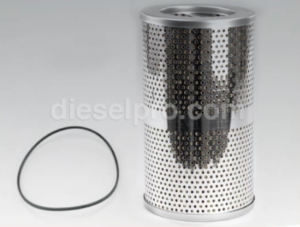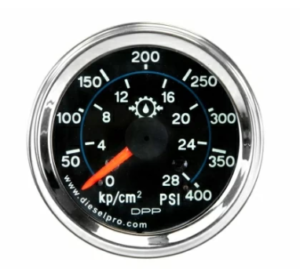

Parts Catalog for Twin Disc MG521 Marine Transmissions
Rebuilt Twin Disc MG521 Marine Transmissions
Plate Kit For Twin Disc MG521 Marine Transmission
Gasket Kits For Twin Disc MG521 Marine Transmission
Checklist Before First Start For Twin Disc MG521 Marine Gear
The initial startup of the Twin Disc MG521 marine transmission is one of the most critical steps in ensuring long-term operational reliability. Starting a marine transmission without a full system check can lead to rapid gear wear, hydraulic failure, or even catastrophic internal damage. This section provides a comprehensive pre-start checklist to follow before turning the key or engaging the starter.
1. Visual Inspection
Before engaging the starter motor:
- Inspect for Loose Connections: Check all mounting bolts, couplings, and hose fittings. Tighten any hardware that appears loose or improperly seated.
- Look for Leaks: Ensure there are no signs of oil seepage around shaft seals, filters, or hydraulic lines. A leak during startup can lead to clutch slippage or pressure loss.
- Confirm Clean Work Area: Ensure no foreign objects (tools, rags, fasteners) are inside or near the bell housing, coupling, or gear housing.
2. Verify Mounting and Alignment
Improper engine-to-gear alignment can cause excessive vibration, input shaft failure, and gear tooth wear. Prior to startup:
- Ensure the transmission is firmly secured to the engine’s bell housing with all bolts torqued to spec.
- Use a dial indicator to check shaft alignment at the propeller flange.
- Confirm that all isolators or shims are in place and equally compressed.
3. Check Fluid Levels
Using the dipstick or sight gauge:
- Confirm that the gear case is filled to the “Full” mark with the correct SAE 30 or approved marine transmission oil.
- Recheck the oil level after allowing time for fluid to settle into gear cavities.
4. Inspect Control Systems
- Ensure mechanical or hydraulic shift linkages are installed correctly and respond fully in both forward and reverse positions.
- If using electronic controls like the EC300, verify power-on self-tests and display readings.
- Test shift lever detents manually with the engine off. It should engage clearly in F-N-R.
5. Oil Cooling and Circulation
If your MG521 is connected to an external oil cooler:
- Confirm that all oil cooler lines are connected and secure.
- Ensure seawater cooling flow (if present) is functional and free of blockage.
- Prime the cooler with oil if needed to prevent an airlock during initial circulation.
Priming the Oil System For Twin Disc MG521 Marine Gear
The hydraulic system in the MG521 must be fully primed to ensure the clutch packs engage correctly, the internal bearings are lubricated, and the oil pressure system stabilizes. Starting the transmission without priming can result in a dry start, which is especially harmful to friction surfaces and pump internals.
1. Why Priming Is Critical
During shipping, storage, or downtime, oil drains back into the sump. The internal pump and galleries may be dry, and air pockets can form, preventing full hydraulic engagement of the clutches.
A dry start may cause:
- Excessive wear of clutch friction plates
- Pump cavitation or seizure
- Delay in shift engagement
- Overheating due to lack of lubrication
2. Manual Priming (Recommended Method)
If your MG521 has a priming port:
- Remove the plug from the oil gallery priming port.
- Use a hand pump to circulate 1–2 quarts of oil through the port while turning the input shaft manually.
- Monitor for oil return at the filter or cooler outlet to confirm flow.
- Reinstall the plug with thread sealant once priming is complete.
3. Engine-Crank Priming (Alternate Method)
If no manual port is available:
- Disable the ignition or fuel system to prevent startup.
- Crank the engine for 10–15 seconds at a time.
- Allow 30 seconds between cranks.
- Observe oil pressure readings and fluid movement in sight glass.
Repeat until pressure builds and the fluid level stabilizes.
4. Confirming Prime Success
- Fluid should rise slightly in the sight glass as galleries fill.
- No air bubbles should be visible in return lines.
- With the engine at idle, oil pressure should build within 5 seconds after actual startup (covered in the next section).
First Run Parameters and Idle Check For Twin Disc MG521 Marine Gear
With the oil system primed, the MG521 is ready for its first operational run. This first start is not about propulsion—it’s about verification. You’re not testing speed but confirming temperature stability, pressure buildup, clutch engagement, and fluid flow.
1. Startup Procedure
- Start the engine with the gear in NEUTRAL.
- Let it idle between 600–750 RPM depending on engine spec.
- Do not shift into forward or reverse for the first 2–3 minutes.
- Watch for vibration, unusual noises, and fluid movement in the sight glass.
2. Check for Oil Leaks

Inspect the following areas closely:
- Input shaft seal
- Output flange seal
- Oil filter threads
- Cooler inlet and outlet lines
- Control line fittings
Use a clean towel or paper around joints to detect leaks.
3. Monitor Oil Temperature
- Temperature should begin to rise within 5–10 minutes.
- Normal rise is approximately 10–15°F every 5 minutes at idle.
- Shut down immediately if temperatures exceed 200°F or climb rapidly.
Use an infrared gun or installed sensor to monitor casing temperature.
4. Shift Engagement Test (After 5 Minutes)
- Move the control into FORWARD briefly and return to NEUTRAL.
- Then test REVERSE.
- Each engagement should be smooth, with minimal “clunk” or hesitation.
- Do not exceed idle RPM during this test.
If the gear fails to engage or slips, investigate pressure and linkage immediately.
Oil Pressure Verification For Twin Disc MG521 Marine Gear

Proper oil pressure ensures that the hydraulic clutches engage fully, and that internal lubrication reaches gears, shafts, and bearings. The MG521 relies on a mechanical or electrically driven pump to maintain this system.
1. Installing a Pressure Gauge
- Use the factory port or tee fitting on the pressure test point.
- A 0–400 PSI glycerin-filled gauge is ideal.
- Digital gauges may offer real-time feedback but must be shock resistant.
2. Expected Oil Pressure Readings
| Engine RPM | Expected Pressure (PSI) |
| Idle (600–750) | 200–250 PSI |
| Cruise (1800) | 250–300 PSI |
| Max Load | 275–325 PSI |
Slight fluctuations (±10 PSI) are acceptable due to cooler resistance or RPM drift.
3. Low Pressure Troubleshooting
If pressure is below the recommended range:
- Check Oil Level: Low oil may cause cavitation.
- Inspect Filter: A clogged filter will restrict flow.
- Verify Pump Function: Listen for whining or grinding.
- Inspect Control Valve Block: Malfunctions can cause bypassing.
If pressure is not restored after correcting oil levels and replacing the filter, consider disassembling the oil pump for inspection.
Troubleshooting During Startup For Twin Disc MG521 Marine Gear
Even with careful planning, issues can arise during first startup. Recognizing early symptoms of problems can help you take corrective action before damage occurs.
1. Gear Slipping on Engagement
If the MG521 does not “lock in” when moved into gear:
- Check oil pressure (must be over 200 PSI).
- Inspect the shift lever linkage for full throw.
- Ensure there are no air pockets in the hydraulic lines.
- Check that the control valve is not sticking.
Clutch slippage often occurs due to incomplete hydraulic actuation or contaminated oil on friction plates.
2. Delayed Engagement
A delay of more than 1.5 seconds between control input and gear engagement could indicate:
- Air in the system
- Excessively thick oil in cold conditions
- Low hydraulic pump flow
- Misadjusted electronic control calibration
Perform additional purging or review EC300 programming parameters.
3. Vibration or Harsh Shifting
Common causes include:
- Misaligned propeller shaft
- Worn coupling bushings
- Engine and gear out of alignment
- Clutch pack chatter due to glazing or improper break-in
If the vibration disappears at higher RPMs, alignment is the most likely issue.
4. Noisy Operation
Common startup noises:
- High-pitched whine: Often oil pump cavitation or bearing preload.
- Rattling: Could indicate loose flywheel bolts or coupling bolts.
- Clunking when shifting: Check control cable tension and shift detent adjustment.
Always record sounds and symptoms in the maintenance log for comparison at future service intervals.
Noise and Vibration Analysis For Twin Disc MG521 Marine Gear
A properly installed MG521 should operate smoothly with minimal noise and vibration. Abnormalities during or after startup often signal mechanical issues that, if uncorrected, can lead to expensive repairs.
1. Acceptable Noise Levels
- Low humming at idle is normal.
- Clicking, chattering, or loud whining is not.
- Noise should not change significantly between forward and reverse.
Use a stethoscope or contact microphone to isolate the source if noise is detected.
2. Diagnosing Vibration
Vibration can be caused by a number of issues. Use the following checklist to diagnose:
Possible Cause |
Check |
| Shaft misalignment | Runout and face dial indicators |
| Damaged flexible coupling | Inspect for play, cracks, or uneven wear |
| Imbalanced propeller | Inspect shaft and propeller hub |
| Engine mount degradation | Check for cracked rubber or loose mounts |
| Clutch pack chatter | Evaluate oil type and plate wear |
Perform tests at idle, cruise, and high idle RPMs, noting changes.
3. Recording and Comparing Data
- Use vibration analysis tools or smartphone apps for vibration spectrum logging.
- Keep startup vibration logs and compare them every 100 hours.
- Track if vibration increases with time, load, or temperature.
If vibration worsens over time, shut down the system and perform full inspection of all drivetrain components.
Conclusion: Mastering the First Start of the Twin Disc MG521 Marine Gear
The initial startup of the Twin Disc MG521 marine gear is more than a button push—it’s a process. A successful first run can extend the gear’s life by thousands of hours. A careless one can lead to costly repairs or dangerous failures.
Let’s recap the essentials:
- Perform a full visual, fluid, alignment, and linkage inspection before even thinking about ignition.
- Prime the oil system fully to avoid dry starts.
- At first startup, observe temperatures, oil pressure, and engagement before applying any load.
- Use a calibrated gauge to monitor oil pressure and confirm clutch pack actuation.
- Troubleshoot immediately at the first sign of slippage, noise, or abnormal readings.
- Carefully analyze noise and vibration, log results, and adjust alignment or lubrication accordingly.

Rebuilt Twin Disc MG521 Marine Transmissions
Plate Kit For Twin Disc MG521 Marine Transmission
Gasket Kits For Twin Disc MG521 Marine Transmission
Videos About Twin Disc Transmissions
6 Reasons Your Twin Disc Transmission Has Low Oil Pressure
7 Reasons Your Twin Disc Transmission Is Overheating
3 Reasons Your Clutch Plates in Your Twin Disc Transmission Are Making Excessive Noise
Bull Gear On A Twin Disc Transmission
Rebuilt Twin Disc Transmissions



 Free US Calls: 1-888-433-4735
Free US Calls: 1-888-433-4735 International: 305-545-5588
International: 305-545-5588